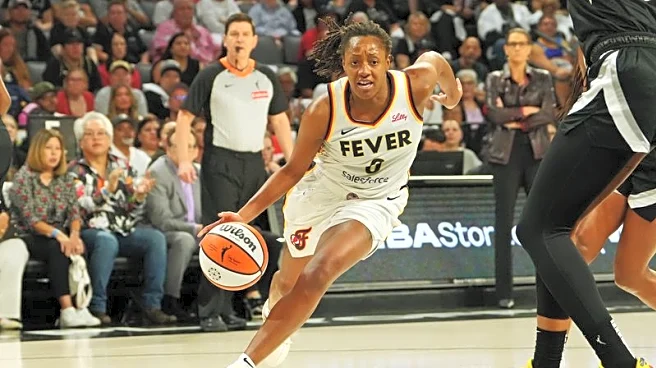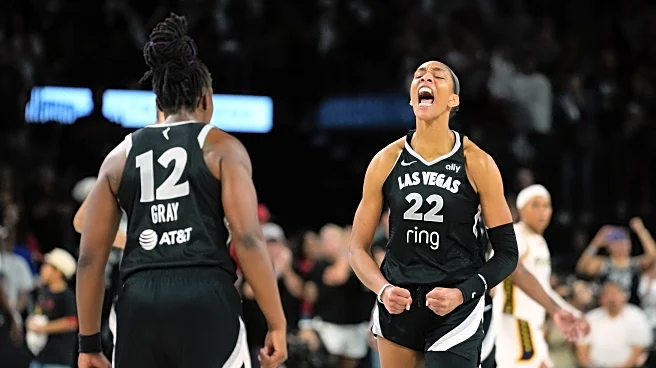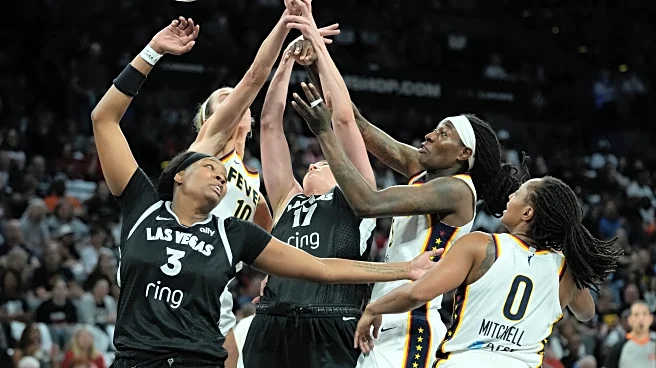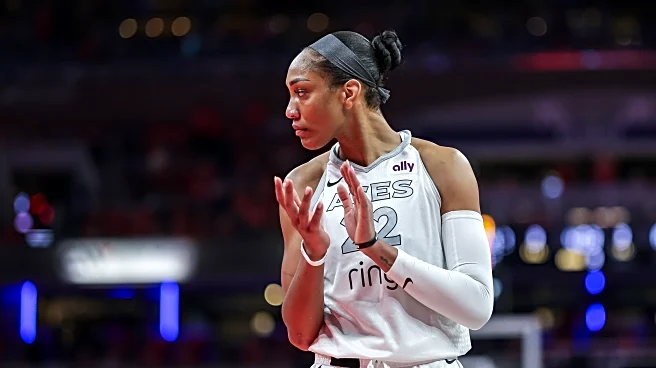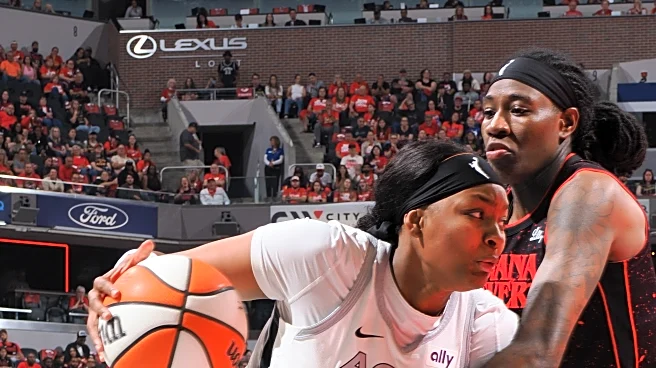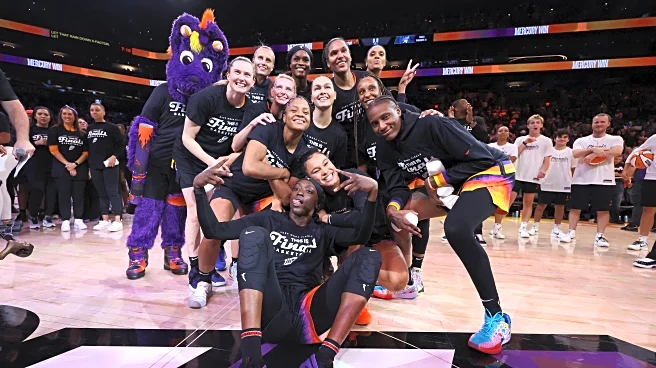What's Happening?
The Indiana Fever are facing a pivotal offseason as they look to build their 2026 roster. The team, which finished the season with a 24-20 record and reached the playoffs as the No. 6 seed, is dealing with several player injuries and contract uncertainties. Caitlin Clark, a key player, announced she would not return this season due to a left groin injury. Other players, including Sydney Colson and Aari McDonald, also suffered season-ending injuries. The Fever's roster decisions will be influenced by the upcoming collective bargaining agreement (CBA) and free agency. Kelsey Mitchell, who averaged a career-best 20.2 points, is likely to be designated as a core player, giving the Fever exclusive rights to negotiate a supermax contract with her. Natasha Howard and Lexie Hull are among the players whose contracts are up for renewal.
Why It's Important?
The Fever's offseason decisions are crucial for their future competitiveness in the WNBA. The potential changes in the CBA could impact player salaries and team dynamics, influencing how the Fever can structure their roster. Retaining key players like Kelsey Mitchell is vital for maintaining team performance and fan engagement. The team's ability to navigate free agency and manage player injuries will determine their success in the upcoming season. The Fever's strategy will also reflect broader trends in the WNBA regarding player contracts and team building.
What's Next?
The Fever will need to make strategic decisions regarding player contracts and potential trades. The outcome of the CBA negotiations will play a significant role in shaping their roster. The team will likely focus on securing their core players while exploring options to strengthen their lineup through free agency. Monitoring player recovery from injuries will also be essential as they prepare for the next season.
Beyond the Headlines
The Fever's situation highlights the challenges WNBA teams face in balancing player health, contract negotiations, and competitive performance. The evolving landscape of women's basketball, including increased visibility and investment, adds complexity to team management. The Fever's approach could set precedents for other teams navigating similar issues.




